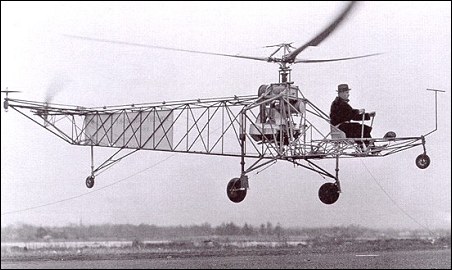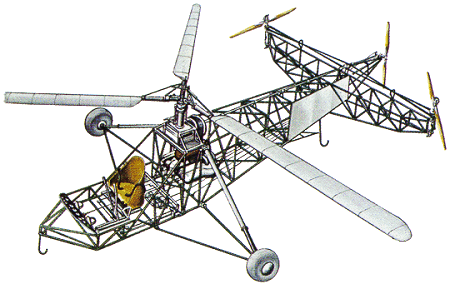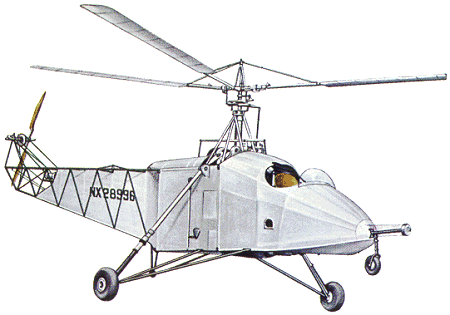
| Vought-Sikorsky VS-300 1985 |  |
 |

| Vought-Sikorsky VS-300 1985 |  |
 |
|
Russian-born Igor Sikorsky built his first helicopter, powered by a 25hp Anzani engine, in 1909. It would not leave the ground, and a second machine, completed in 1910, was little better; it did rise a short distance, but was incapable of lifting a pilot, and Sikorsky turned his attention to fixed-wing aeroplanes. After the 1917 Revolution he left the country, settling in the United States some two years later, and soon entering the aircraft industry of his new country. In 1938, when he was Engineering Manager of the Vought-Sikorsky Division of United Aircraft Corporation, years of study and research into rotary-wing flight problems were rewarded when the directors of U.A.C. agreed to let him try once again to build a practical helicopter. The VS-300, as the project was named, was designed and built during the first half of 1939, and on 14 September Sikorsky was at the controls when the aircraft made its first vertical take-off. At this stage the aircraft was still tethered to the ground and had weights suspended underneath it to help keep it stable. It was powered by a 4-cylinder Lycoming engine of 75hp, had full cyclic pitch control for the main rotor and a single anti-torque tail rotor at the end of a narrow enclosed tailboom which also supported a large under-fin. The cyclic control was not fully satisfactory, however, and by the time the VS-300 made its first free flight on 13 May 1940 (now powered by a 90hp Franklin motor) the configuration had changed to an open-framework steel-tube fuselage with outriggers at the tail end. Each of these mounted a horizontally-rotating airscrew to provide better lateral control; the vertical tail screw was retained. By mid-1940 the VS-300 was staying airborne for 15 min. at a time, and on 6 May 1941 it beat the world endurance record held by the Fw.61 by staying aloft for 1 hr. 32 min. 26.1 sec. Various modifications were made during 1940-41, the most important being the replacement of the tail outriggers in June 1941 by a short vertical pylon carrying a single horizontal tail rotor, and the reinstatement in December of a now fully satisfactory cyclic pitch control for the main rotor. Other alterations concerned the arrangement of the main undercarriage and the fitting of nose and tail wheels in place of skids. In April 1941 Sikorsky made a successful take-off from water by fitting pneumatic flotation bags under the main undercarriage wheels. In its final form the VS-300 had a 150hp Franklin engine, a fabric-covered fuselage and a tricycle undercarriage. Testing continued throughout 1942 (by which time development of Sikorsky's first production helicopter, the R-4, was well advanced), and in 1943 the VS-300 was delivered to the Henry Ford Museum in Dearborn, Michigan, where it is still housed today. The first practical helicopters, in the sense that they accomplished satisfactorily manoeuvres that we now take for granted - vertical take-off and landing, hovering, and forward, backward and sideways flight - were the Breguet-Dorand and the Fw.61. The VS-300 accomplished more, by paving the way for production aircraft that could carry a useful load and perform a productive job of work. The general manager of Sikorsky Aircraft, Lee S. Johnson, summed up its contribution twenty years later when he said: 'Before Igor Sikorsky flew the VS-300, there was no helicopter industry; after he flew it, there was." K.Munson "Helicopters And Other Rotorcraft Since 1907", 1968



|